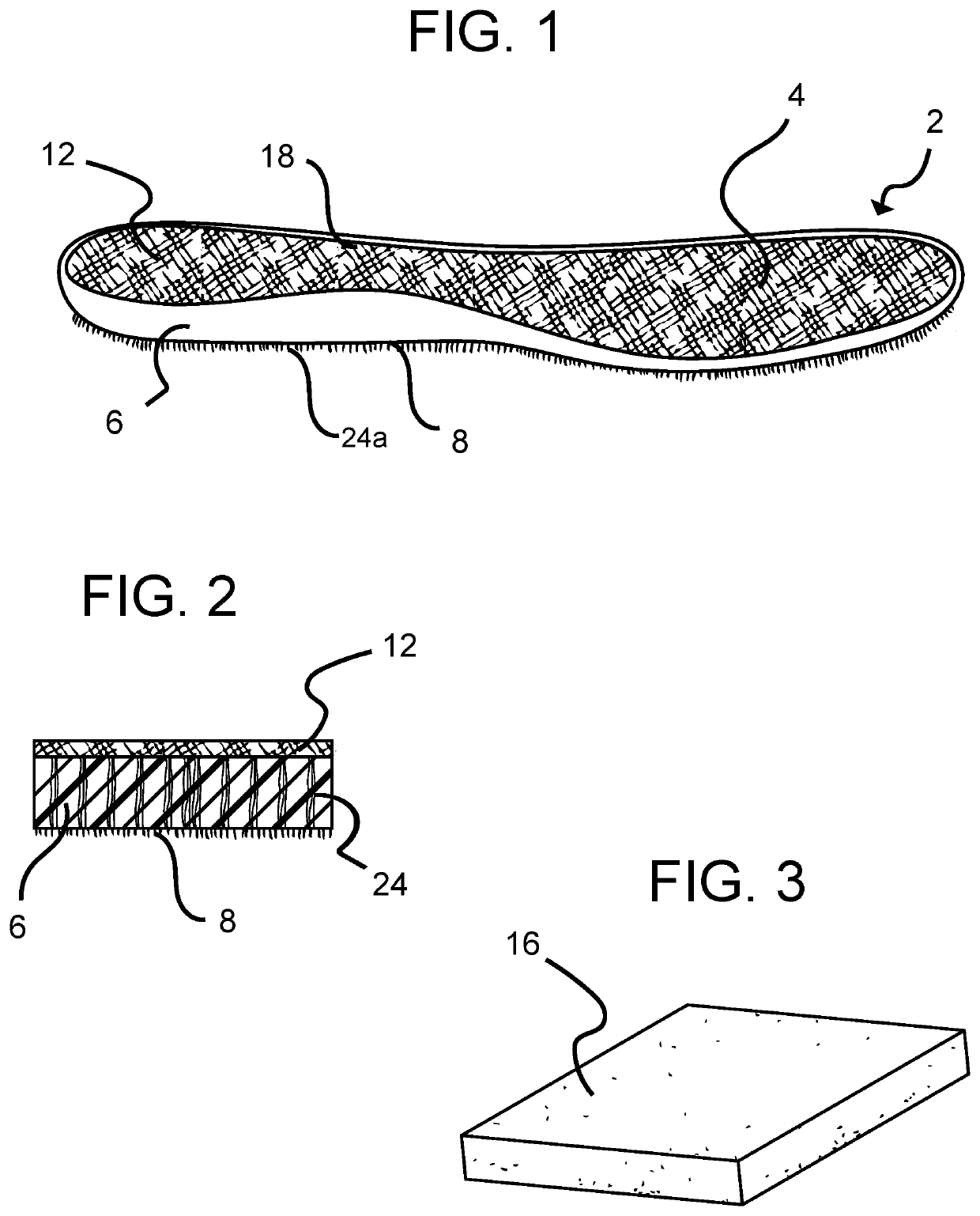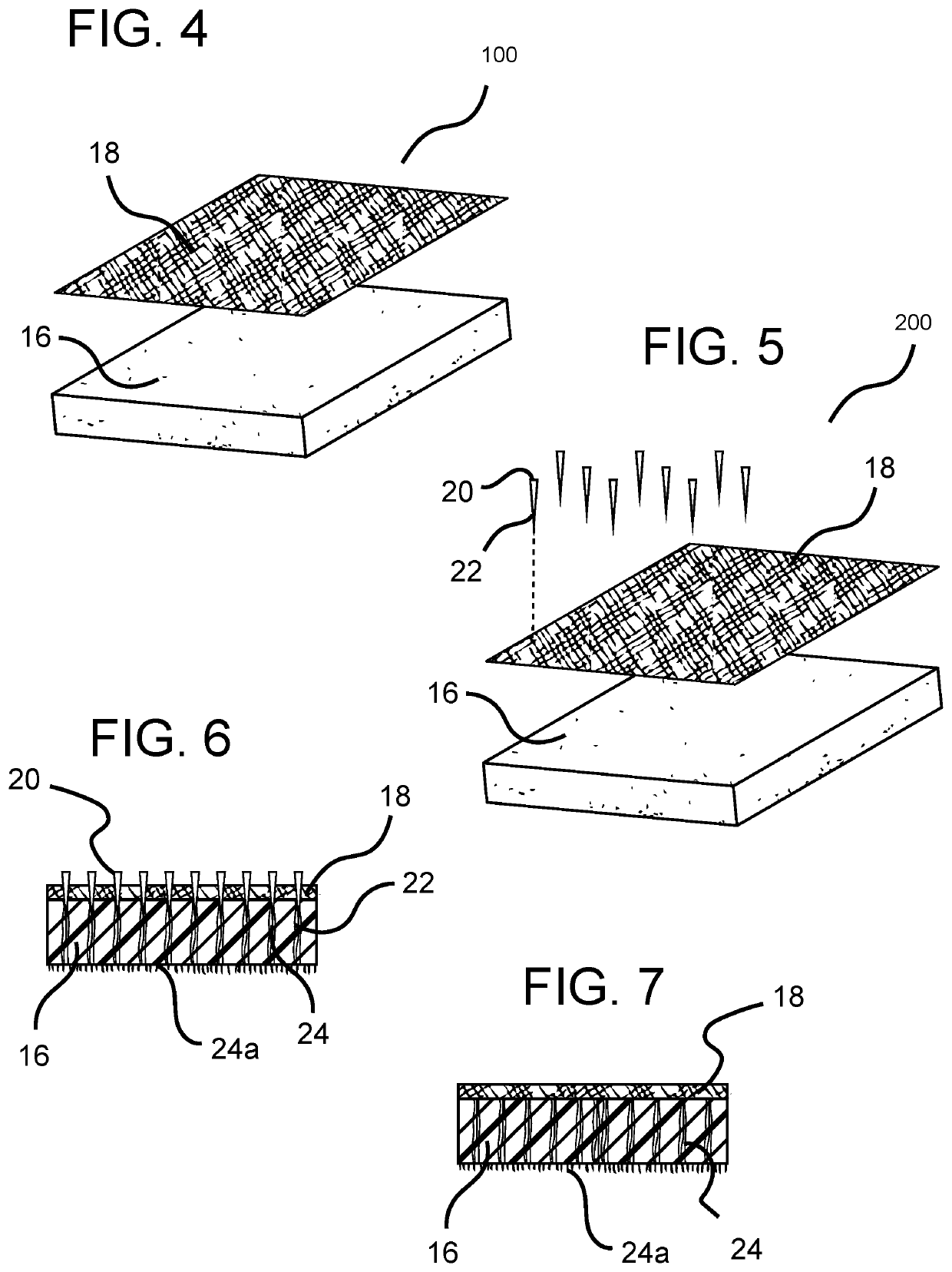Antistatic fiber-foam shoe insoles, and a method of manufacturing the same
a technology of fiber foam and shoe insoles, which is applied in the field of antistatic shoe insoles, can solve the problems of reducing affecting the comfort of instant invention, and affecting the quality of products, so as to improve the static dissipation capability, improve the comfort of instant invention, and improve the effect of efficiency and reliability in us
- Summary
- Abstract
- Description
- Claims
- Application Information
AI Technical Summary
Benefits of technology
Problems solved by technology
Method used
Image
Examples
Embodiment Construction
[0019]As illustrated in FIG. 1, an antistatic shoe insole 2 includes a main body portion 4 which is comprised of a flexible foam body 16. The body portion 4 has a bottom working surface 8 and a top surface 12. As is known in the art, in some embodiments, the shoe insole 2 can be constructed to be double sided such that the top surface and the bottom working surfaces will appear to be the same. In other embodiments, the top surface and bottom working surface may be different materials to ensure the optimal comfort and design for the shoe wearer. Several non-limiting examples of the top surface of the instant invention can be any conductive woven or non-woven material such as a steel-polyester felt blend or carbon-containing fibers, while several non-limiting examples of the bottom working surface of the instant invention can be comprised of any conductive woven or non-woven material such as silver coated fibers or fine inox wire. In other embodiments, there can be an optional cover l...
PUM
| Property | Measurement | Unit |
|---|---|---|
| thickness | aaaaa | aaaaa |
| flexible | aaaaa | aaaaa |
| conductive | aaaaa | aaaaa |
Abstract
Description
Claims
Application Information
 Login to View More
Login to View More - R&D
- Intellectual Property
- Life Sciences
- Materials
- Tech Scout
- Unparalleled Data Quality
- Higher Quality Content
- 60% Fewer Hallucinations
Browse by: Latest US Patents, China's latest patents, Technical Efficacy Thesaurus, Application Domain, Technology Topic, Popular Technical Reports.
© 2025 PatSnap. All rights reserved.Legal|Privacy policy|Modern Slavery Act Transparency Statement|Sitemap|About US| Contact US: help@patsnap.com


